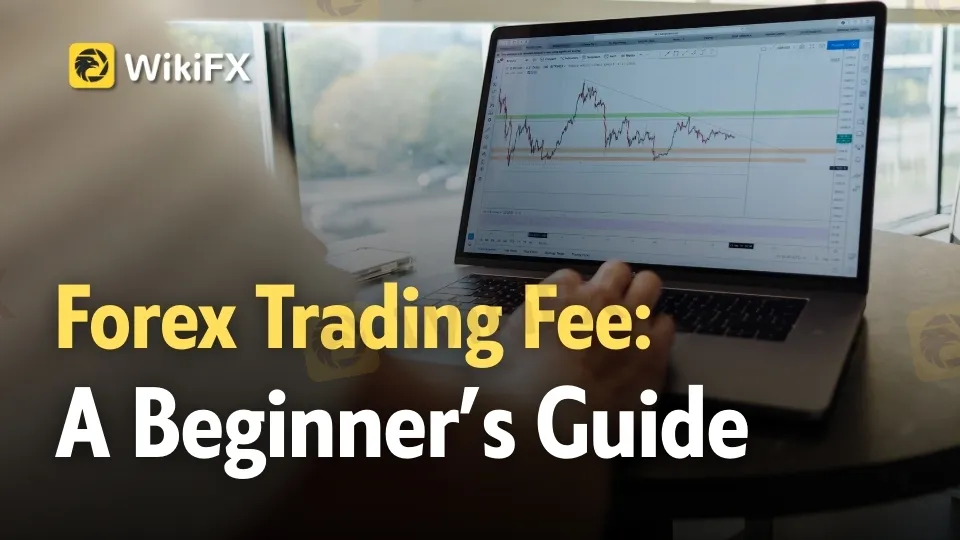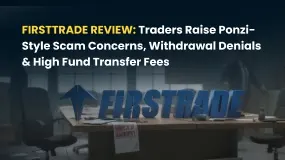简体中文
繁體中文
English
Pусский
日本語
ภาษาไทย
Tiếng Việt
Bahasa Indonesia
Español
हिन्दी
Filippiiniläinen
Français
Deutsch
Português
Türkçe
한국어
العربية
What Is Forex Trading Fee? A Beginner’s Guide
Abstract:Understand forex broker fees and trading costs in detail. Explore fee comparisons, learn to reduce expenses, and maximize your profitability with practical forex trading tips.

Forex trading offers exciting opportunities for investors to profit from currency price movements globally. However, understanding the costs associated with forex trading is crucial for maximizing profitability. The term “forex trading fee” encompasses several types of fees and charges that traders incur when buying and selling currencies. These fees directly impact your trading profits and should be carefully considered when choosing a broker and executing trades.
This comprehensive guide explains the various forex trading fees, compares popular brokers fee structures, and offers practical tips to help you minimize costs and maximize your returns. Whether you're a beginner starting your forex journey or an experienced trader looking to optimize expenses, this article covers everything essential about forex trading fees.
What Is Forex Trading Fee?
A forex trading fee refers to the amount charged by brokers and financial institutions for facilitating currency trades. These fees compensate brokers for providing access to the forex market, maintaining trading platforms, and offering services such as execution, data feeds, and account management.
Unlike traditional stock trading fees, forex trading fees are typically embedded in the bid-ask spread or charged as explicit commissions. Additionally, traders may encounter overnight financing costs and account-related fees. Understanding all these fee types helps traders keep costs manageable and avoid surprises.

Types of Forex Trading Fees
1. Spreads
The spread is the most common forex trading fee and represents the difference between a currency pairs buy (ask) price and sell (bid) price. For example, if the EUR/USD bid price is 1.2000 and the ask price is 1.2005, the spread is 0.0005 or 5 pips.
Brokers make money from this difference. The tighter (smaller) the spread, the lower your transaction cost. However, spreads can vary based on market liquidity, volatility, and broker type.
- Fixed spreads stay constant regardless of market conditions.
- Variable spreads fluctuate depending on market activity and volatility.
Spreads are particularly important for day traders and scalpers who execute many trades and rely on tight spreads to maintain profitability.
2. Commissions
Some brokers charge commissions instead of or in addition to spreads. This is a fixed or percentage-based fee per trade, often charged per standard lot traded.
Commission-based models typically offer tighter spreads, which can reduce total trading costs for high-frequency traders. However, commissions can add up quickly, so it's important to factor them into your strategy.
3. Overnight Financing Fees (Swap Fees)
When you hold a position overnight, brokers charge or credit an overnight financing fee, also known as a swap fee. This fee reflects the interest rate differential between the two currencies traded.
- If you hold a currency with a higher interest rate, you may receive a credit.
- If you hold a currency with a lower interest rate, you pay a fee.
Overnight fees compound if positions are held open long-term, so it is vital for swing and positional traders to monitor these costs.
4. Account-Related Fees
Besides trading costs, there can be other fees associated with your trading account, such as:
- Inactivity fees: Charged if no trades occur within a specified period.
- Deposit/withdrawal fees: Costs for funding or withdrawing money from your account.
- Currency conversion fees: When your account currency differs from the withdrawal currency.
- Subscription fees: Charges for premium market data or advanced platform features.
How Forex Trading Fees Affect Profitability
Forex trading fees reduce the net gains from your trades. Even seemingly small costs, like a few pips in the spread, can significantly impact overall profitability, especially in high-frequency trading or with tight profit targets. For example:
- A 1 pip spread on EUR/USD equals roughly $10 per standard lot.
- If your trading strategy targets a 5-pip gain, a 1-pip spread consumes 20% of your profit potential.
Holding positions overnight with swap fees will further reduce profits or increase losses if the fee is negative.
Therefore, understanding and managing these fees is critical to successful forex trading.
Comparing Forex Broker Fee Structures
Forex brokers differ widely in how they charge fees, and choosing the right broker involves comparing their fee structures, services, and reputation. Below is an overview of typical fee structures among popular brokers:
| FP Markets | Fixed/Variable | From 0.0 pips raw | $6 per round trip (Pro account) | Yes | No inactivity fee | Tight spreads, multiple account types |
| IC Markets | Variable | From 0.0 pips raw | $6–$7 per round trip | Yes | No inactivity fee | ECN broker, popular with active traders |
| Pepperstone | Variable | From 0.0 pips (Razor) | $7 per round trip | Yes | No inactivity fee | Razor accounts offer lowest spreads + commissions |
| AvaTrade | Fixed/Variable | From 0.9 pips | $0 | Yes | $10 monthly inactivity fee after 2 months | One of the few with swap-free accounts for Islamic traders |
| ActivTrades | Variable | From 0.5 pips | $0 | Yes | No inactivity fee | No deposit minimum, good for beginners |
| Interactive Brokers | Variable | From 0.1 pip | From $0.08 per 1k USD lot | Yes | One free withdrawal monthly | Best for advanced traders seeking low commission |
This table highlights that brokers offering zero commissions often charge wider spreads, while those with tight spreads typically impose commissions. Overnight fees vary but are standard in most brokers. Also, inactivity and withdrawal fees can add costs if the account is inactive or frequently funded/withdrawn.
Tips for Minimizing Forex Trading Fees and Maximizing Profits
1. Choose the Right Broker
- Compare spread and commission costs for your preferred currency pairs.
- Look for brokers with transparent fee disclosures.
- Consider brokers with no inactivity fees or low deposit/withdrawal costs.
- Use regulated brokers with good reputations to avoid hidden fees.
2. Trade Major Currency Pairs
Major pairs like EUR/USD, GBP/USD, and USD/JPY tend to have tighter spreads and higher liquidity, which reduces your spread cost.
3. Optimize Trading Time
Trade during the most liquid market hours (London and New York sessions), when spreads are narrower.
4. Monitor Overnight Fees
Avoid holding positions overnight if swap costs are high or use swap-free accounts if available and compatible with your trading style.
5. Use Limit Orders
Market orders execute immediately at the worst available price, potentially increasing slippage and spread costs. Limit orders allow you to specify the price to control costs better.
6. Manage Trading Frequency
Avoid overtrading. Frequent trades with commissions and spread costs can erode profits.
7. Review Account Activity
Avoid inactivity fees by maintaining minimal trading activity within your brokers required period.
Real-World Examples
- A trader using Pepperstones Razor account trades one standard lot EUR/USD with a 0.1 pip spread and $7 commission per round trip. The total trading cost equals $8 (spread) + $7 (commission) = $15. This low-cost arrangement suits high-frequency traders.
- Conversely, a trader using a spread-only broker with an average 1.2 pip spread on EUR/USD but no commissions pays about $12 per standard lot per trade, but might save on commission costs with fewer trades.
- Traders holding a long USD/JPY position overnight might earn swap credits if the US interest rate is higher than Japans, boosting profitability, but should monitor to avoid negative swaps on opposite trades.
In summary, the forex trading fee you pay—comprising spreads, commissions, overnight fees, and account-related charges—directly impacts your trading profitability. Choosing a broker with favorable fees aligned to your trading style, trading major pairs during liquid times, and using cost-saving strategies can help optimize your forex trading journey.
Whether you are new or seasoned, always factor in all fees before initiating trades and regularly review your trading costs to adjust your strategies accordingly. Understanding forex trading fees is not just about reducing expenses; its about managing your trading business effectively to achieve consistent success.

Disclaimer:
The views in this article only represent the author's personal views, and do not constitute investment advice on this platform. This platform does not guarantee the accuracy, completeness and timeliness of the information in the article, and will not be liable for any loss caused by the use of or reliance on the information in the article.
Read more

Firsttrade Review: Traders Raise Ponzi-Style Scam Concerns, Withdrawal Denials & More Issues
Have you lost all your capital while trading via Firsttrade? Does the US-based forex broker disallow you from withdrawing funds? Do you have to pay massive fees when transferring funds? Does your trade get affected because of frequent malfunction in the trading app? These have been haunting many traders at Firsttrade. Consequently, many of them have raised complaints online. In this Firsttrade review, we have shared such complaints. Keep reading to know about them.

Defcofx Review: Spread Manipulation & Poor Customer Support Outrage Traders
Does the poor customer support service leave you stunned when trading via Defcofx? Do you receive blunt, negative responses from the support team on several trading queries? Does the Saint Lucia-based forex broker pile on the losses for you by manipulating forex spread charges? In this Defcofx review, we have shared some complaints made against the broker. This will further answer your question: Is Defcofx real or fake?

How to Add and Take Out Money from Amillex Broker: A Complete Guide
Good money management is the foundation of successful trading. Learning how to make an Amillex Broker deposit and withdrawal is your first step toward trading with confidence. We know that for any trader, moving money must be safe, fast, and simple. This guide gives you a complete, step-by-step walkthrough for all amillex broker funding activities, so you can manage your account with total clarity. The whole process, from your first deposit to taking out profits, is made to be simple. You start by logging into your secure client area, picking a payment method that works for you, choosing the amount, and confirming the transaction. This guide will cover detailed deposit instructions, a full breakdown of withdrawal steps, a comparison of available payment methods, and a detailed look at the security measures protecting every transaction.

FCA warning: These Firms are on the list
In 2025, the UK’s Financial Conduct Authority (FCA) intensified its crackdown on financial misconduct, issuing a series of fines and public warnings against both major institutions and forex brokers. This article provides an updated list of brokers, banks, and financial platforms that have been recently fined, banned, or listed on the FCA’s warning list, highlighting the importance of transparency and investor protection in the UK’s financial market.
WikiFX Broker
Latest News
Annual Sales Of New Vehicles Expected To Hit Only 15.7 Million Units: Cox
Currency Calculator



